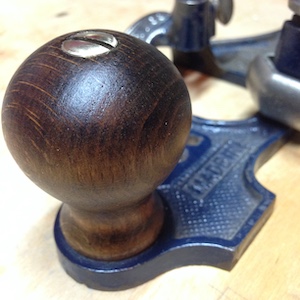One skill I enjoy practicing is refurbishing old tools. When I got serious about improving my woodworking skills, I didn’t want to pay a lot of money for them. At the same time I wanted them to be of good quality.
Good tools cost money
And five of the same second-rate tool costs more money. If you’ve ever bought an inexpensive tool – against your better judgment – you know.
You learn that the cost of acquiring good tools is an investment. Taking into consideration quality and the reputation of the maker, that may be so. Today, there are a number of modern, boutique makers whose offerings justify the money spent.
It seems like the cost of new, contemporary tools is a bit high. But you are paying for something extra that momentarily escapes your awareness.
On the edge
In the not so distant past, most tools like chisels, axes, and plane blades were not sharpened before they were sold.
The end user took the tool home and prepared it for use. If you had a grinder, you did the initial grinding. If not, you used whatever you had – coarse sharpening stones and files – to do the final sharpening and honing.
This could take a bit of time and a lot of trial and error to get it right. Some blades could take hours. This was and still is a source of anxiety and frustration for many woodworkers.
Convenience costs
Now, quality tools are sharpened at the factory and ready to use right out of the box. The cost of that service is built into the price. You still may have to hone them or refine the blade edge.
It can be a revelation to someone who had no idea about sharpening. They might find out when a plane blade gets badly damaged from misuse. Or when a chisel is mangled from a drop on a concrete floor and needs repairing. Or when someone shows you how to sharpen the right way after you’ve been woodworking for umpteen years!
Refurbishing: mother of reinvention?
Winemakers know there are years that produce good vintage wines and then there are just bad vintage years.
It’s like that with tools. The old ones are not always the mother of new tools. Similarly, some modern tools may not be up to standard until a lot of tweaking is done to get them to function properly.
Old tools that have been around for decades, or a century, will sing when properly tuned or refurbished. That’s what I look for when searching for a vintage tool.
That little bit of knowledge comes from listening and reading all I can about vintage tools. It comes from attending tool events and places where woodworkers get together and talk.
Doing the research about early makers helps in making the best choices. Sometimes you act on instinct about condition. Price influences that decision, too.
If you are fortunate to inherit a tool, especially one that has been well-cared for, cradle it like a baby and run straight to your shop.
Refurbishing Old Tools 101
Curiously, I have bought tools and old junkers just to take them apart to see the inner workings. I want to hold an item in my hand, examine it and figure out how it works.

I admit, a well-used tool that has been carefully refurbished feels so good. Hugging your favorite tools in the shop is not a myth, believe me.
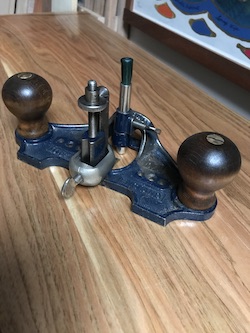
You know what? Much of the time, I’m expecting an old tool to be complicated. Often, it’s so simply made that I’ve felt let down after a “dissection”.
Making tools
Many people had the skills to make their own tools using iron, wood, and know-how derived from need and experience. They made them as simply and cheaply as possible.
If anyone chose to buy a tool from a blacksmith, they bought something they could have made. Outside the shop I do the same thing.
Just when I’m about to buy something, I think, yes, I could make this. Then I decide I’d rather not, but it felt good to believe I could.
Old tool lament
Yes, there are times when I wanted an old, rare-ish, vintage tool for the cachet or the rep. Yes, my ego gets a boost from the adulation!
I like to think I am not like that but I can be.
The choice always hinges on how I feel at the moment and the price. I do love a bargain. Yes, I can afford a bargain. And I can justify any budget-busting purchase, but what’s the fun in that?
Refurbishing old tools takes:
- RESEARCH of the build and assembly points through tool catalogs, patent drawings, vintage magazine ads and other resources,
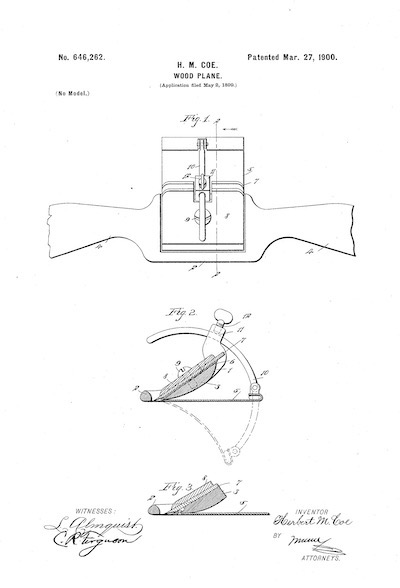
2. COURAGE to dismantle the piece without causing damage,

3. ELBOW GREASE to cautiously clean the tool,

and,
4. COMMON SENSE to determine where in the process to stop. This is the most difficult step.
Refurbishing old tools is not always successful
¡Mira! ¡Bueno, barata puede ser cara! No matter how I say it, the notion that the cheap can be expensive sometimes proves true.
¡Ay, otra vez! A Starret 2″ divider broke in my hand while I was trying to clean it.
They are not made anymore. I bought it at the flea market for $2. And I wasn’t even going to use it! ¡Golpear mi cabeza, ay!
Nothing is worst than a tool becoming useless due to a calamity in that way, but it happens.
It takes that kind of experience to learn when to add a tool-find to the old toolbox with the minimum of messing about and cleaning. Naivety and ignorance are unavoidable. Lessons come from that.
Another issue is determining if an older tool can be used safely. It may be quite fragile or not suitable to the woodworking techniques of today. Sometimes, the value in a tool is simply owning it and appreciating its history. There are a few specimen like that out in the wild waiting to be captured.
Very few people, however, can afford to leave expensive tools forever untouched in a cabinet or toolbox. That’s where the decision to buy old junker tools, expensive ones, or anything in-between just might determine the quality of one’s own woodworking. The answer isn’t always easy.
One ironic thing
Most old tools in almost any condition can be used. However, there are limits for me. I don’t like working with old, rusty junkers. I stated before that I like tools and I like old ones. However, some of them look like they were spit out of the putrid ruins of middle earth!
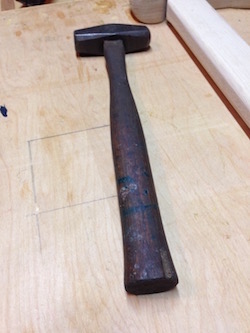
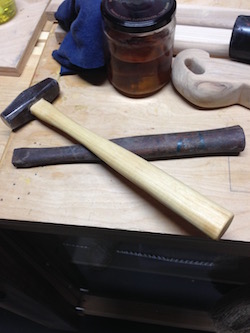
Thinking about where any old tool has been, visions of tetanus, manure piles, jurassic-age tar, toxic waste, or ancient sweat come to mind. If you get a mysterious rash on your hand, this is where you got it. I’m just sayin’.
On the other (gloved) hand, I would consider a vintage tool that has been on my wish list for a long time… maybe? It depends on how compelling the circumstances are at the time, how I feel when I see it, and the price. Yes, there’s that word again.
Getting it clean
Refurbishing old tools means wiping them down with soft cloths. The next step is cleaning them as thoroughly as necessary. A set of small shop brushes with nylon, brass, or steel bristles will help in just about any situation.
I have lubricating and mineral oils for loosening bolts and wiping down the newly restored tool. If need be, I soak it first in my favorite skin-friendly rust buster, citric acid. The work should not require harsh, forceful methods.
The Refurbishing Kit
A supply of hobby and spray paints that I use to protect and enhance finishes and fittings stays in my supply toolbox. Before I do that, I determine if this will harm or hurt the integrity of the tool. Personally, I will not spray a black tool red, for instance.
I’ve experimented and mixed up a special, matching blue paint finish for an old Stanley 60-1/2″ block plane. However, I painted as needed – not the entire plane body. The finish on the blue Record router plane that I mentioned earlier, was unretouched. It was only cleaned. The E. C. Stearns spokeshave wings, having heavy paint loss, were lightly prepped and spray painted close to their original black.
Research and my own aesthetic influences any decision I make to protect, enhance, or transform the appearance of the tool. That includes altering a tool with modern fittings versus old ones to enable a crucial mechanical function.
A small box of used or NOS (new old stock) screws, blades, and springs is always handy. That’s important, if the goal is preserving the look and feel of the original tool. I make every effort to do this, but old tools can make it difficult to source missing or broken fittings. This is when buying an old, perhaps unsalvageable, tool for parts is perfectly acceptable.
It is nice to see what a tool looks and feels like after refurbishing. Confirming the research is satisfying. And importantly, extending its useful life is a bonus.
Like Dr. Frankenstein after successful restoration of the monster, I can proclaim “It’s alive!”
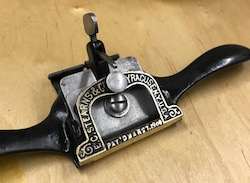
Or just use it.
-Shirley J
❤️

